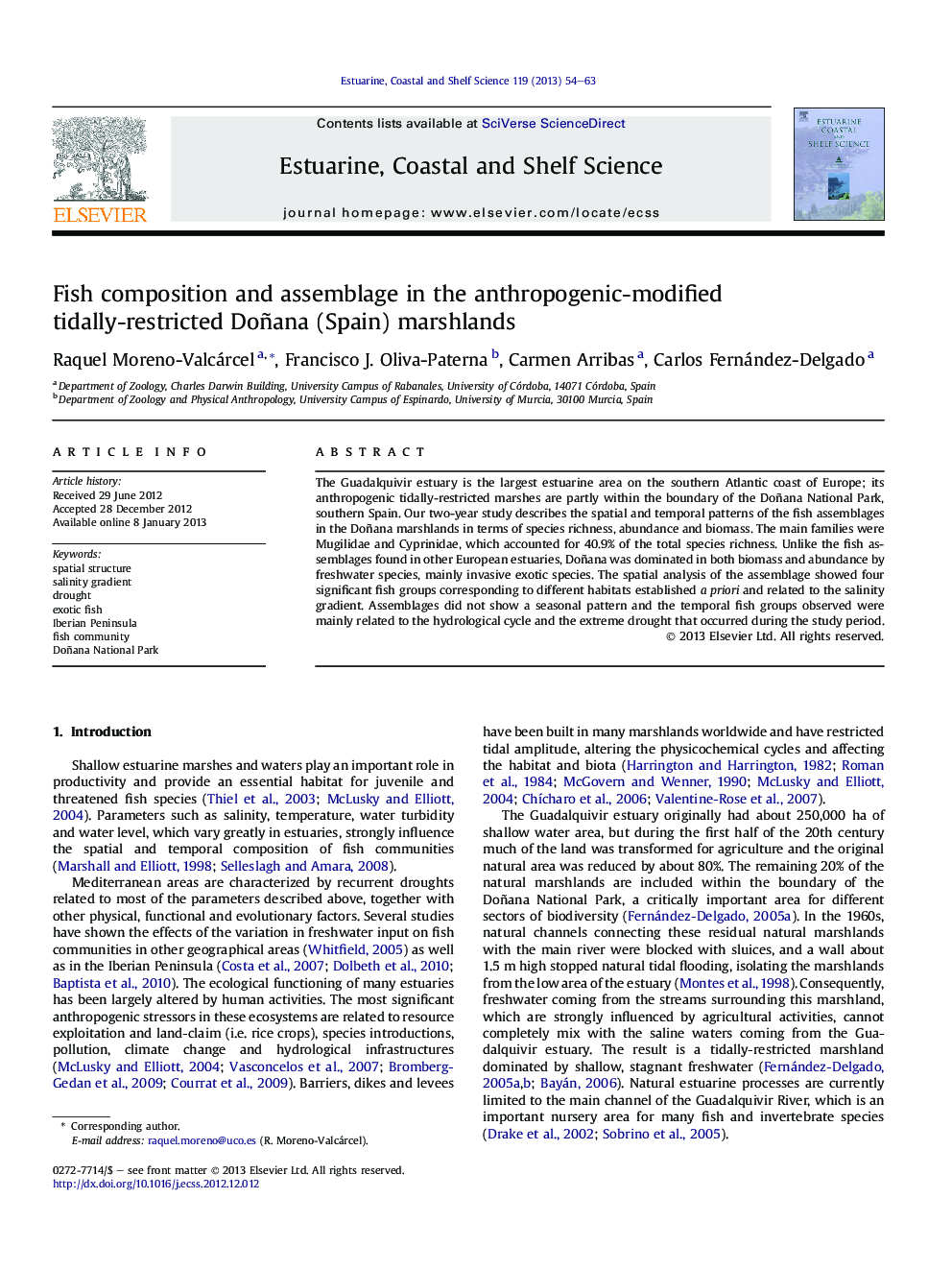| Article ID | Journal | Published Year | Pages | File Type |
|---|---|---|---|---|
| 4539955 | Estuarine, Coastal and Shelf Science | 2013 | 10 Pages |
The Guadalquivir estuary is the largest estuarine area on the southern Atlantic coast of Europe; its anthropogenic tidally-restricted marshes are partly within the boundary of the Doñana National Park, southern Spain. Our two-year study describes the spatial and temporal patterns of the fish assemblages in the Doñana marshlands in terms of species richness, abundance and biomass. The main families were Mugilidae and Cyprinidae, which accounted for 40.9% of the total species richness. Unlike the fish assemblages found in other European estuaries, Doñana was dominated in both biomass and abundance by freshwater species, mainly invasive exotic species. The spatial analysis of the assemblage showed four significant fish groups corresponding to different habitats established a priori and related to the salinity gradient. Assemblages did not show a seasonal pattern and the temporal fish groups observed were mainly related to the hydrological cycle and the extreme drought that occurred during the study period.
